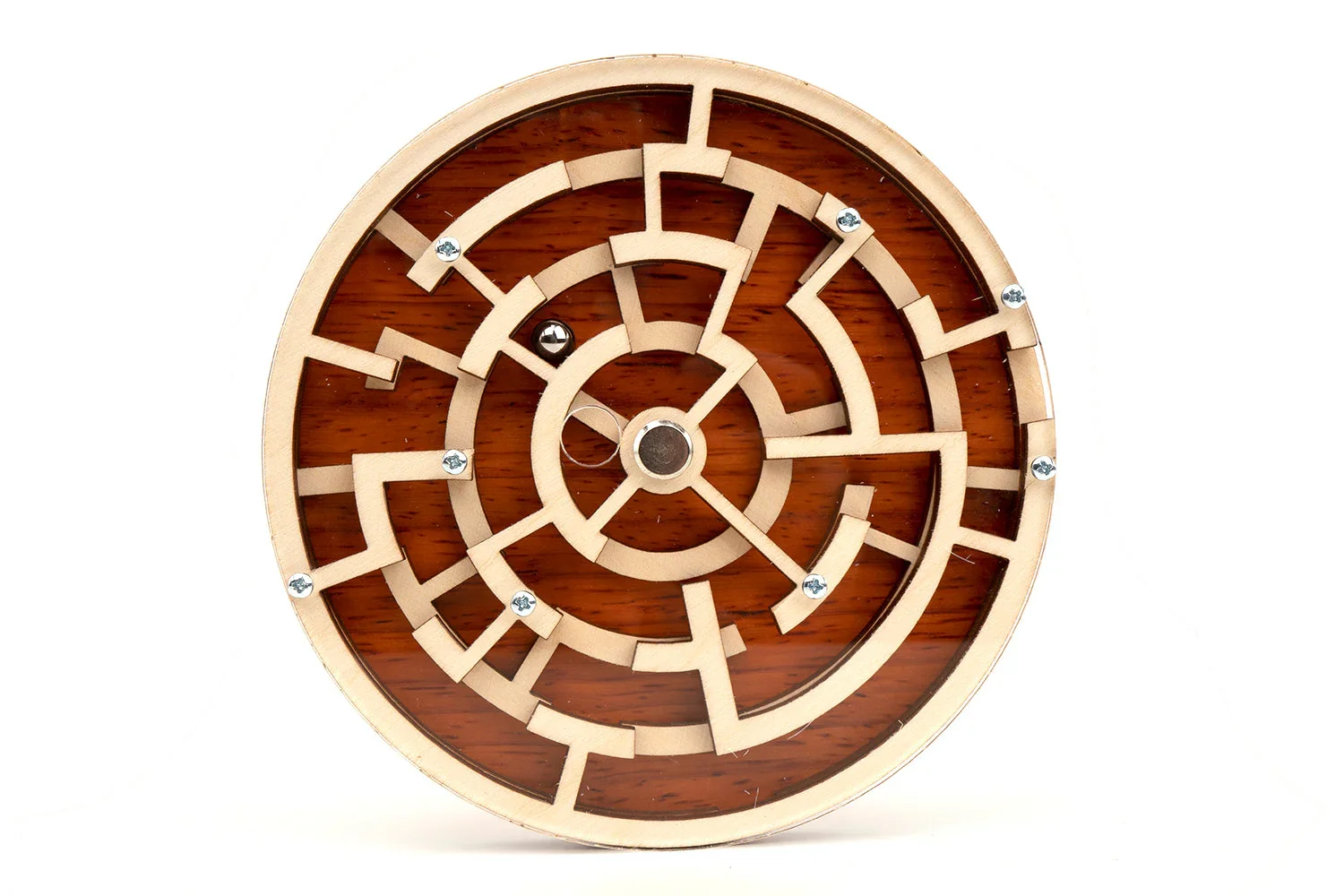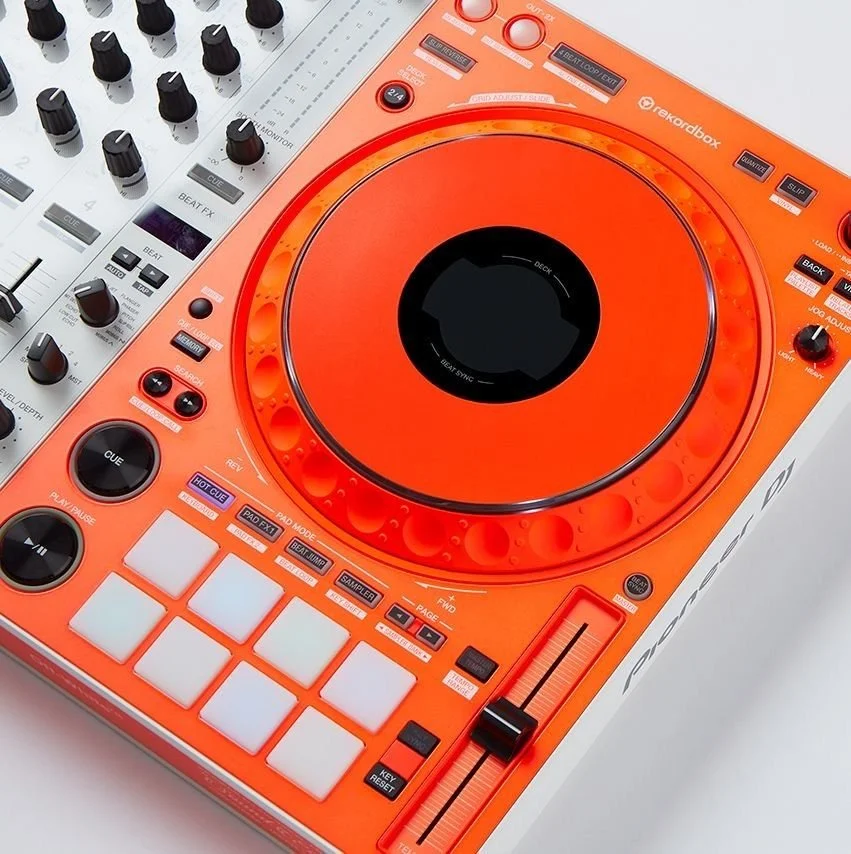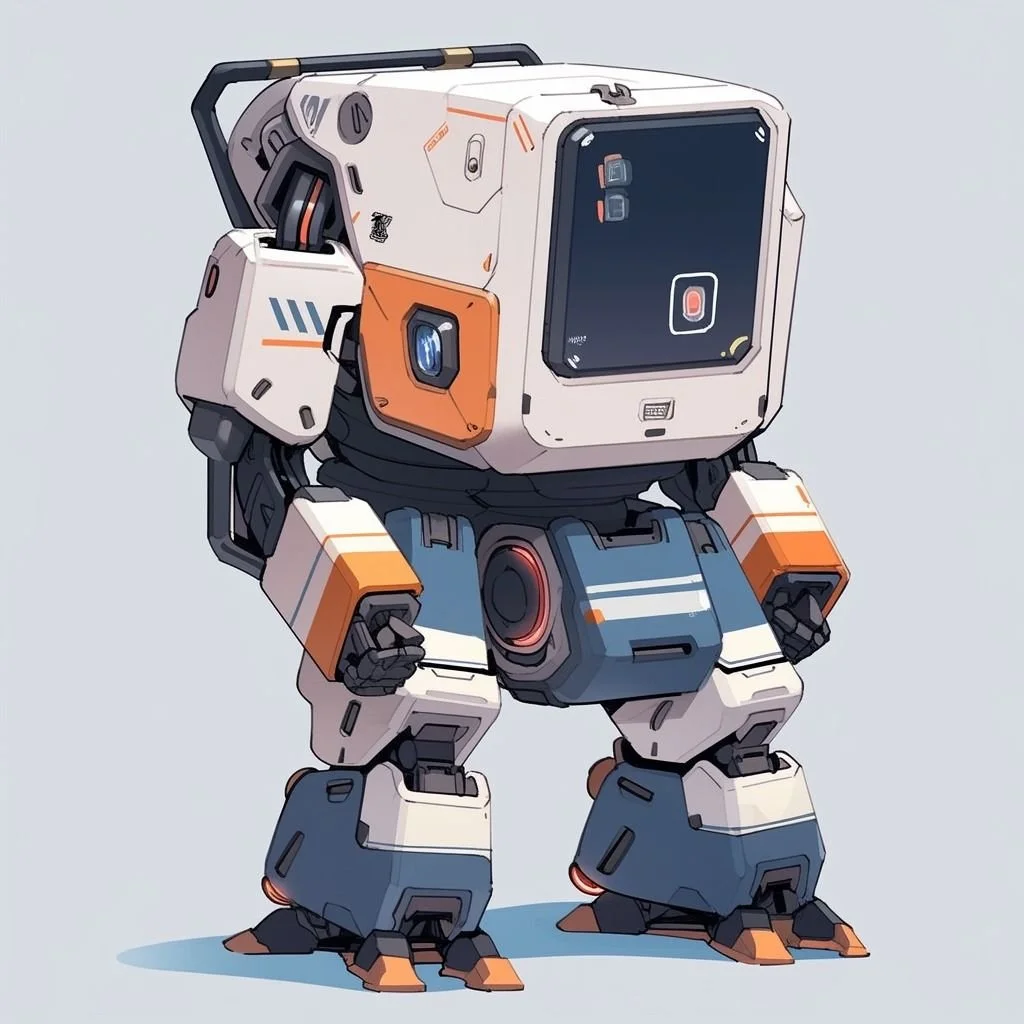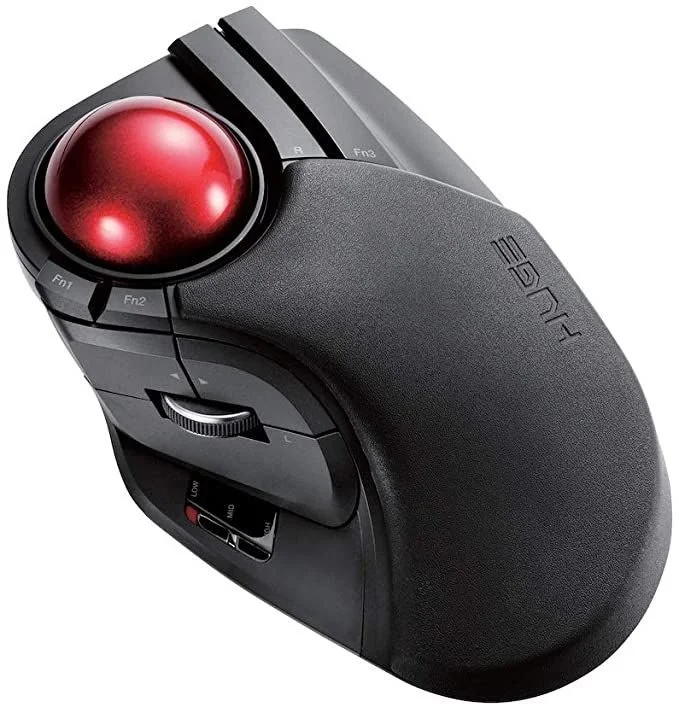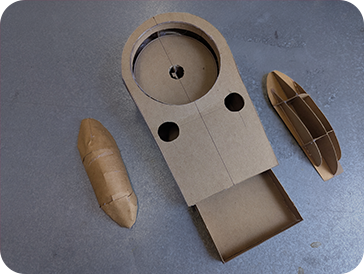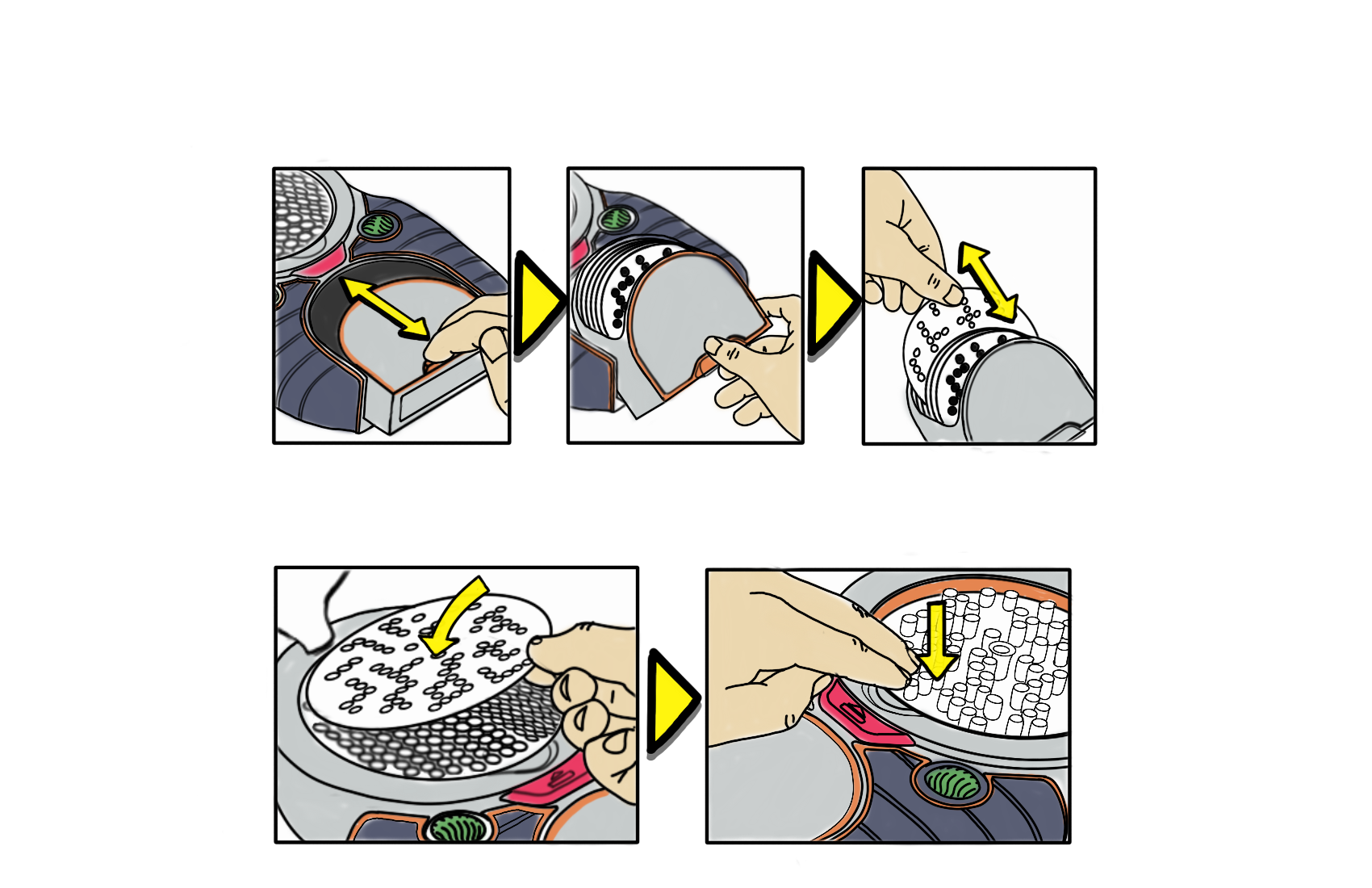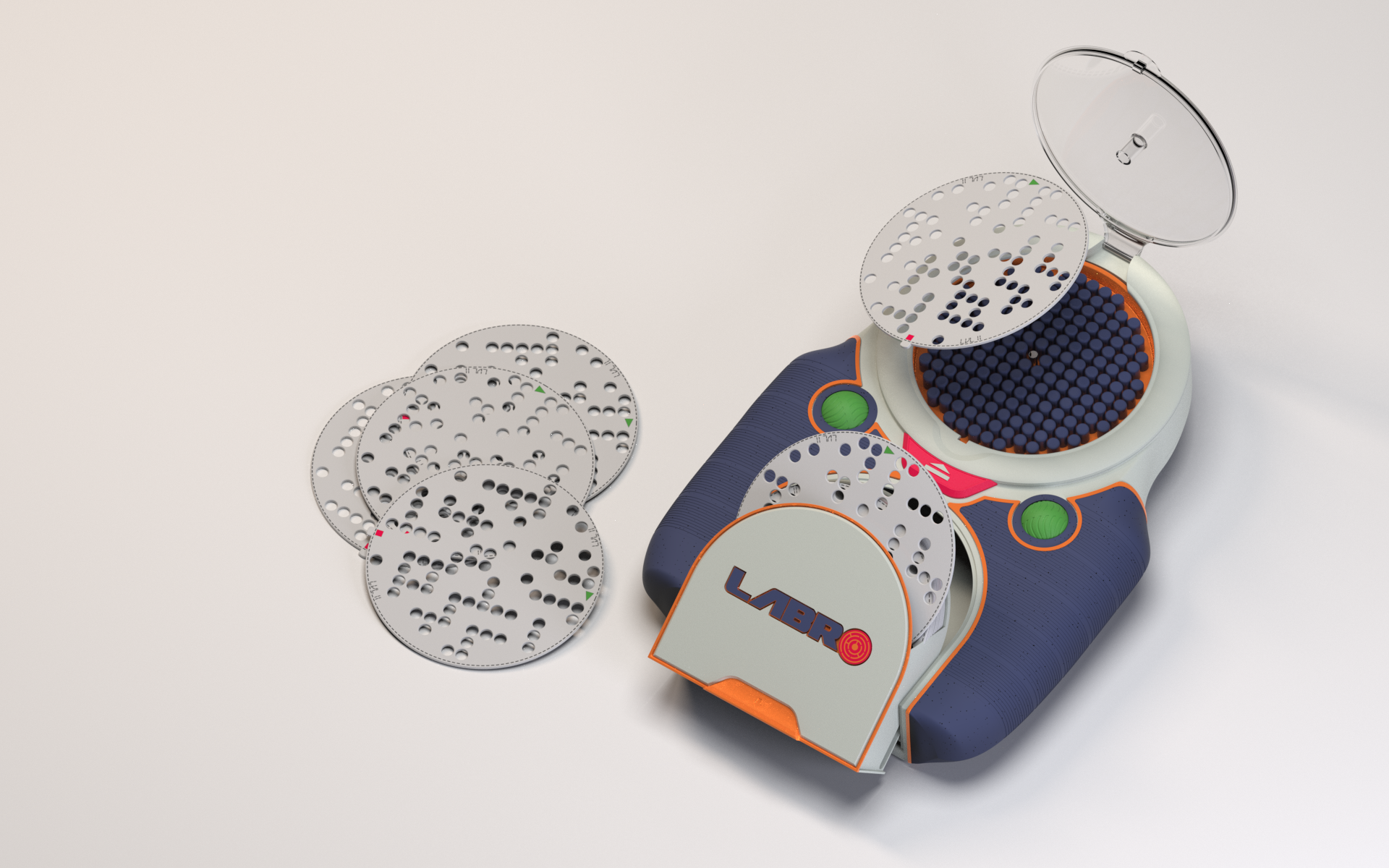
Toy Design
Design a meaningful toy backed by research and strong design philosophy.
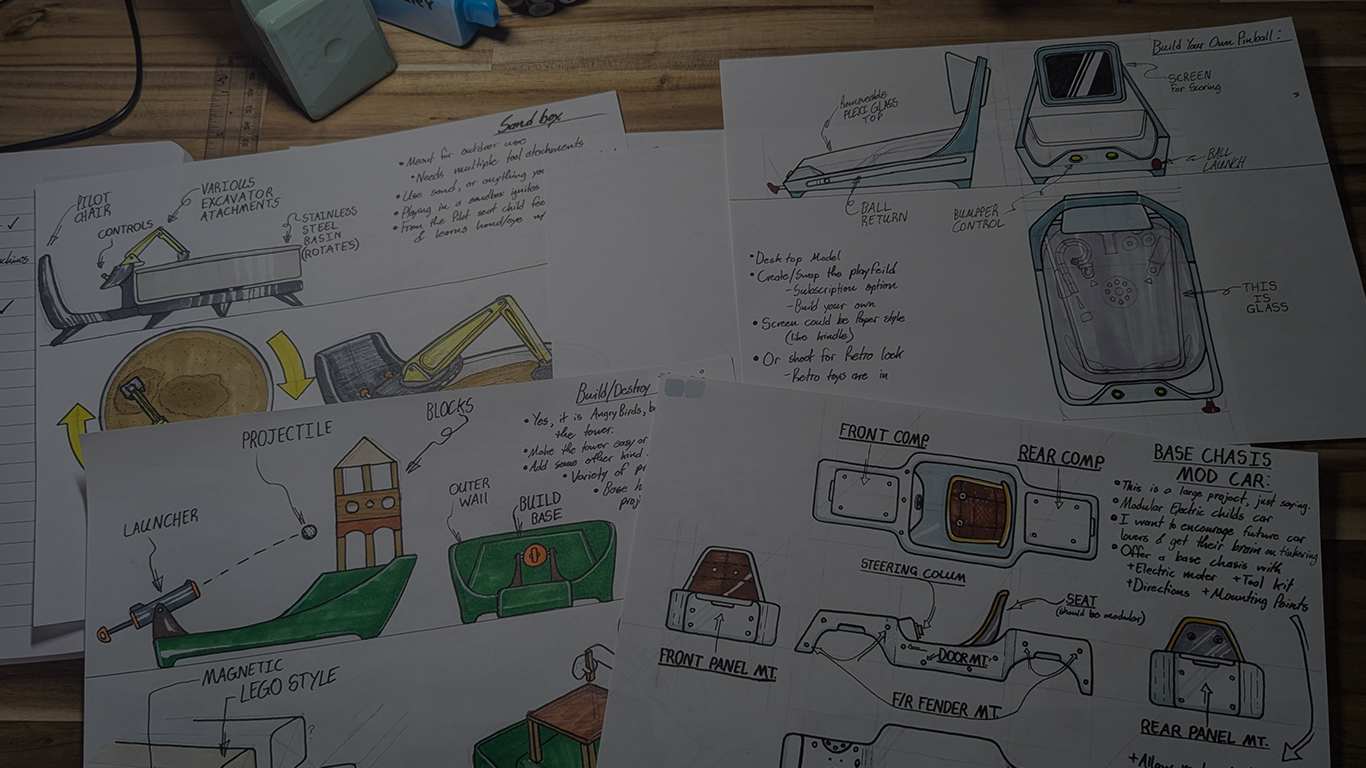
Finding a Path
Exploring ideas for meaningful toys led me down many paths, interactive sandboxes, demolition games, modular pinball machines, customizable electric cars, even a mortar-shooting gallery. The common threads among these concepts were modularity, hand-eye coordination, and sparking the imagination.
In the end, I landed on an idea that, at first, seemed a little underwhelming:
A Ball Maze.
Benchmarking
The problem with ball mazes is a general lack of replay ability.
Is a Ball Maze Meaningful?
YES! Mazes, puzzles, and problem-solving toys help kids build key skills, plus, they’re fun and boost brainpower.
Visual Skills
Fine Motor Skills
Patience
Finding Solutions
Cognitive Skills
Confidence
Functional Inspiration
Aesthetic Inspiration
Conception
Traditional ball mazes lose appeal once completed. To keep them engaging, I designed a modular maze using a spring-loaded pin board and interchangeable level cards. The cards have hole patterns that allow certain pins to pop up, forming unique maze layouts. Players navigate the ball by rotating the playfield and using gravity to reach the finish.
Ideation Sketching
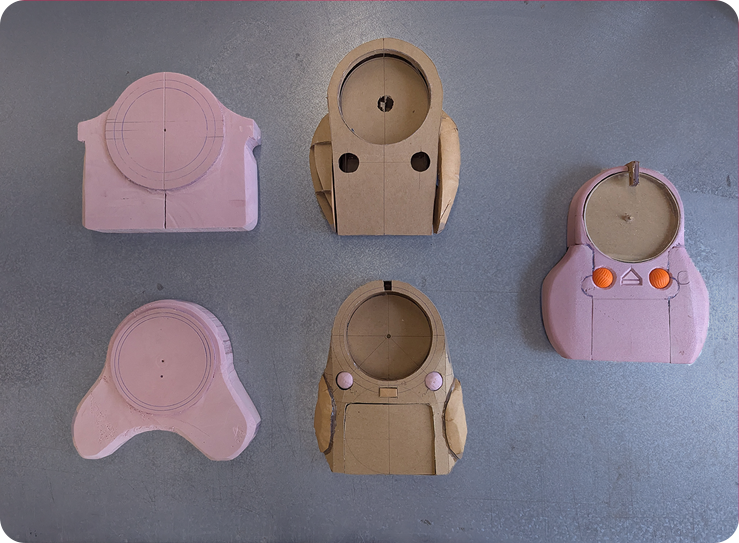
Modeling
1 & 2 Foam Model
Landscape orientation was quickly discarded after foam models revealed an uncomfortable hand position.
3 Chipboard Model
Model 3’s grips were neither aesthetic nor comfortable, but its side profile was carried into the final CAD.
4 Chipboard Model
Model 4 offered the best overall width, drawer design, and hand positioning.
5 Foam Model
Model 5 had an appropriate overall length and comfortable hand positioning; however, the controls were set too far inward from the handles.
CAD Modeling
Cad Modeling for this project was the most in depth I had ever gone into Solid Works. Many hours went into making this as realistic as possible in the time frame allotted.
With CAD modeling complete my rotational labyrinth was complete.
Story Boarding
1. Play Operation
Rotating the controls left or right will turn the maze clockwise or counterclockwise.
2. Completing Maze
Gravity, combined with the user’s rotation input, guides the ball from start to finish.
3. Ejecting Play Card
After completing the maze, the player presses the eject button, releasing the lid and allowing the play card to be removed.
4. Play Card Selection
Access play cards by sliding the drawer back and pivoting it upward. Use it to select or return play cards to storage.
5. Entering Play Card
Place the play card at the center of the playfield, aligning its tab with the finish, then close the lid.
6. Play Again!
The next maze is ready to be solved!
Each level is labeled by number, and the Labro can currently hold up to 20 play cards. Additional cards can be ordered in bulk from the Labro website.
And that is the Labro, a rotational ball maze designed to be replay able, engaging and analog.



